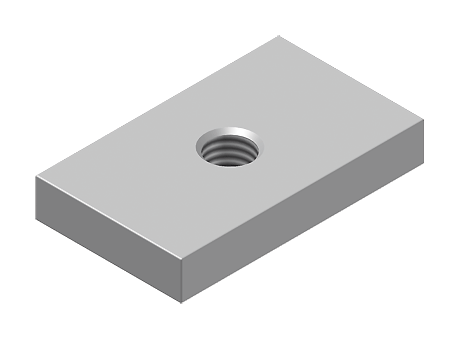How many silicon-30 atoms are found in this plate?
Monel metal is a corrosion-resistant copper-nickel alloy used in the electronics industry. A particular alloy with a density of 8.80 g/cm3 and containing 0.039 % Si by mass is used to make a rectangular plate that is 15.0 cm long, 12.5 cm wide, and 2.50 mm thick and has a 2.50-cm-diameter hole drilled through its center such that the height of the hole is 2.50 mm .
The silicon in the plate is a mixture of naturally occurring isotopes. One of the those isotopes is silicon-30, which has an atomic mass of 29.97376 amu. The percent natural abundance, which refers to the atoms of a specific isotope, of silicon-30 is 3.10%.
How many silicon-30 atoms are found in this plate?
Monel metal is a corrosion-resistant copper-nickel alloy used in the electronics industry. A particular alloy with a density of 8.80 g/cm3 and containing 0.039 % Si by mass is used to make a rectangular plate that is 15.0 cm long, 12.5 cm wide, and 2.50 mm thick and has a 2.50-cm-diameter hole drilled through its center such that the height of the hole is 2.50 mm .
The silicon in the plate is a mixture of naturally occurring isotopes. One of the those isotopes is silicon-30, which has an atomic mass of 29.97376 amu. The percent natural abundance, which refers to the atoms of a specific isotope, of silicon-30 is 3.10%.
How many silicon-30 atoms are found in this plate?
1 Answer
Explanation:
This is going to be a bit long, so let's quickly outline what we're going to do to answer this question:
- Find the volume of the plate.
- Find the mass of the plate.
- Find the mass of silicon in the plate.
- Find the number of atoms of silicon.
- Find the number of atoms of silicon-30.
Volume of Plate
First, to find the volume of the plate with the hole, find the volume of the plate without the hole.
(Let's not worry about significant figures right now.)
Then, find the volume of the hole so we can subtract it from the volume of the plate. The plate probably looks like this:
 TraceParts
TraceParts
(So, the hole is actually a cylinder.)
We've already been given: the diameter of the hole, which is
With this information, we can use the formula for a cylinder's volume to find the volume of this hole.
Therefore, the volume of the plate with the hole in it is
Mass of Plate
Remember the density formula?
We can rearrange that to input volume and density, and have it give us mass. We do this by multiplying the volume variable on both sides.
To find the mass of the plate, we'll use this formula because we've been given the density
Mass of Silicon in Plate
The question tells us that the alloy contains
Atoms of Silicon
The number of moles of silicon in
We also know that there are
Atoms of Silicon-30
The question tells us that
The least amount of significant figures in the question is

